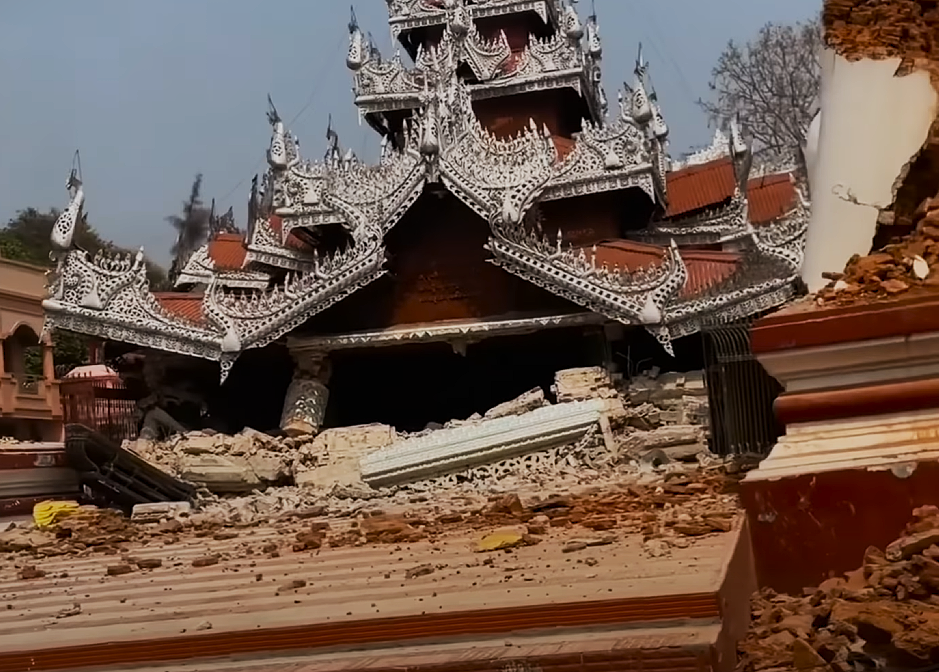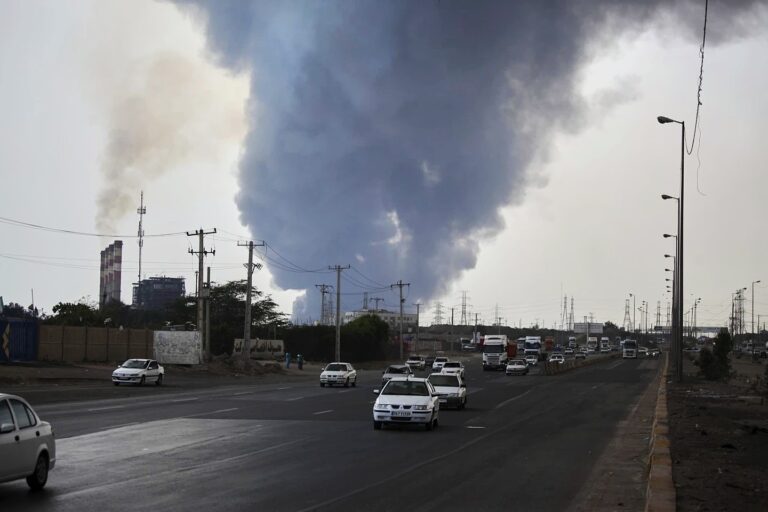
A 5.1-magnitude aftershock struck near Mandalay, Myanmar, compounding the destruction caused by a massive 7.7-magnitude earthquake that hit the region earlier. The latest tremor sent fresh waves of panic through communities already grappling with collapsed buildings, injuries, and widespread devastation. As rescue efforts continue, fears of further aftershocks loom over the disaster-stricken areas.
A Region on Edge as Aftershock Strikes
The aftershock was recorded 50 kilometers southwest of Mandalay, striking at a shallow depth that made the shaking more intense. It came just hours after the 7.7-magnitude earthquake, which was one of the strongest to hit Myanmar in recent history. The seismic event was felt across large parts of the country, including Naypyidaw, Yangon, and even neighboring nations such as Thailand and India.
Survivors described the tremor as a terrifying jolt, with buildings already weakened by the main quake suffering additional damage. Cracks widened, debris fell, and in some areas, structures that had barely withstood the initial quake collapsed entirely. Many residents, too afraid to return indoors, spent the night in open spaces, fearing another deadly tremor.
The 7.7-Magnitude Quake’s Widespread Destruction
The initial earthquake caused severe devastation across central Myanmar. As authorities continue their assessment, the scale of destruction is becoming increasingly clear:
- Casualties rising: While official numbers are still being verified, early reports indicate multiple fatalities and hundreds of injuries. Many people remain trapped under rubble, and rescue teams are racing against time to save lives.
- Collapsed infrastructure: Roads, bridges, and power grids have been heavily damaged, making it difficult for emergency teams to reach the hardest-hit areas.
- Cultural landmarks destroyed: The iconic Bagan temples, a UNESCO World Heritage Site, suffered extensive damage, with some ancient pagodas crumbling under the force of the quake.
- Hospitals overwhelmed: Medical facilities in Mandalay and surrounding regions are struggling to cope with the influx of injured victims, with many requiring urgent surgical interventions.
Fear of More Aftershocks and Warnings Issued
Seismologists warn that aftershocks could continue for days or even weeks, posing further risks to already damaged buildings and increasing the potential for additional collapses. Myanmar sits along the Sagaing Fault, a highly active seismic zone responsible for several major earthquakes in the past.
The Myanmar Department of Meteorology and Hydrology has issued urgent warnings, advising residents to stay alert, avoid unstable structures, and prepare for further tremors. With many homes and buildings unsafe to re-enter, thousands of people have been forced to take shelter in makeshift camps and open spaces.
International Aid and Relief Efforts Begin
As Myanmar struggles to cope with the disaster, international organizations and neighboring countries have begun offering assistance. Search and rescue teams are being deployed, and humanitarian groups are mobilizing resources to provide food, clean water, and medical supplies.
Local volunteers and emergency responders are working tirelessly to rescue survivors, clear debris, and restore essential services. However, with limited infrastructure and resources, the road to recovery will be long and challenging.
A Harsh Reminder of Myanmar’s Seismic Vulnerability
The twin disasters serve as a grim reminder of Myanmar’s vulnerability to powerful earthquakes. Experts are calling for stronger building regulations, improved emergency preparedness, and better seismic monitoring to prevent future tragedies.
As the country mourns its losses and struggles to recover, the resilience of its people will be tested once again. The coming days will be critical as authorities race to assess the full extent of the damage, provide relief to those affected, and brace for any further seismic activity.



